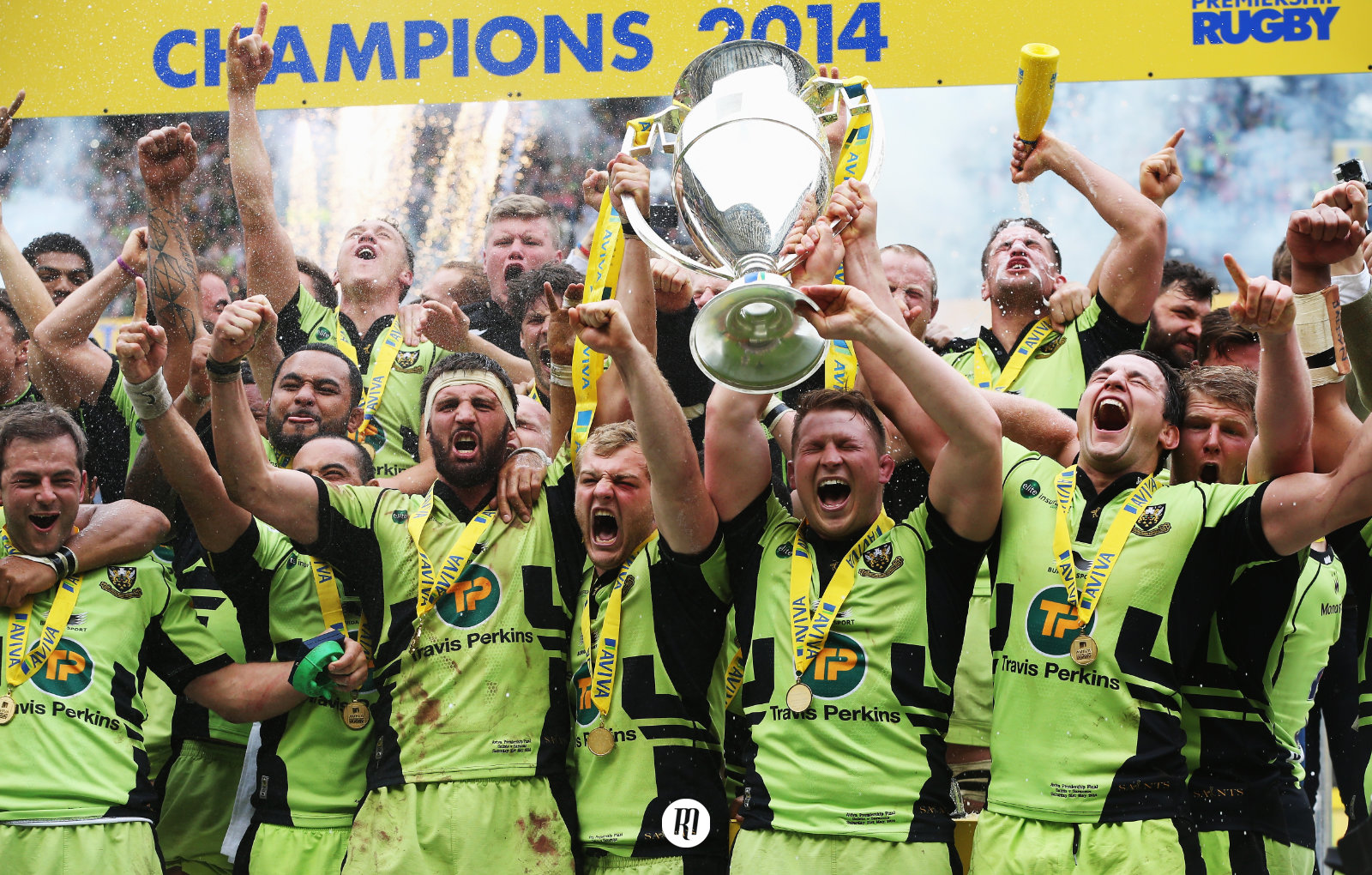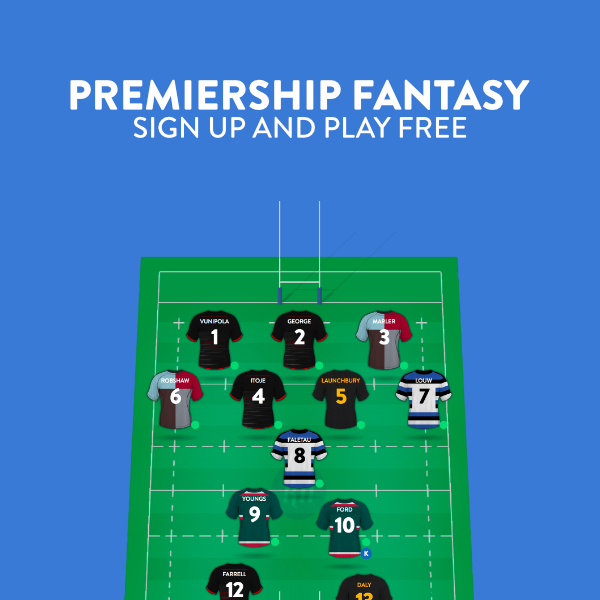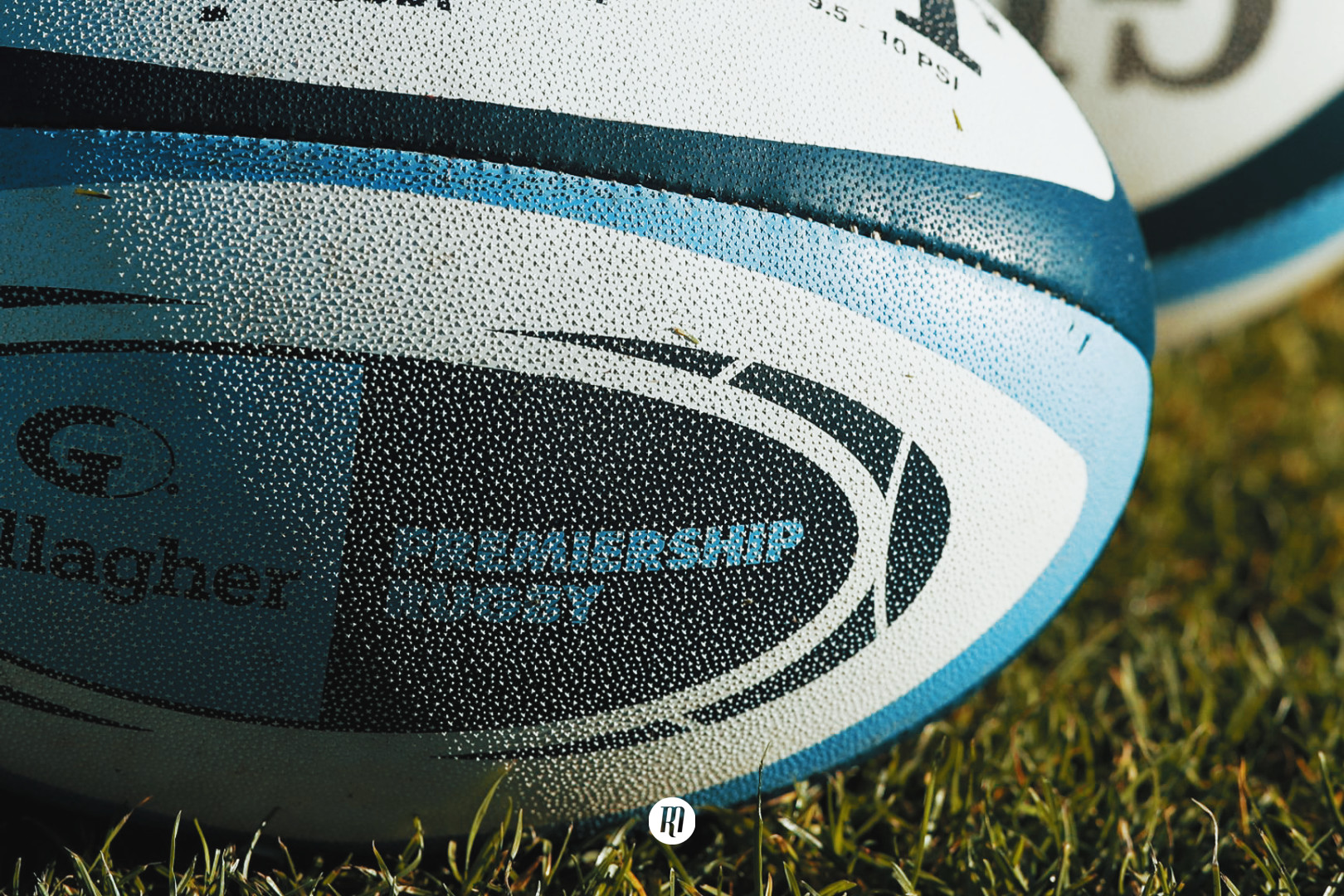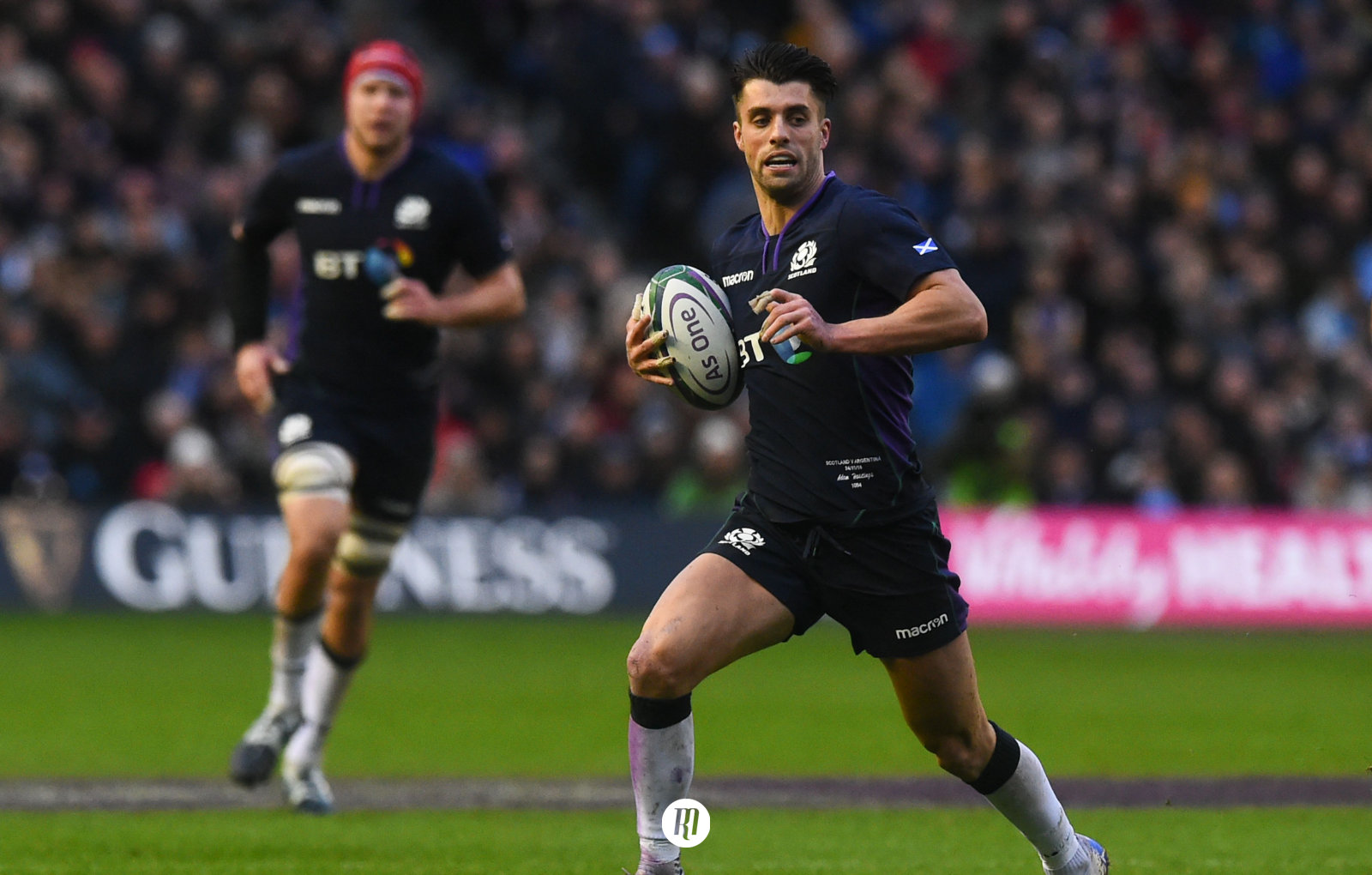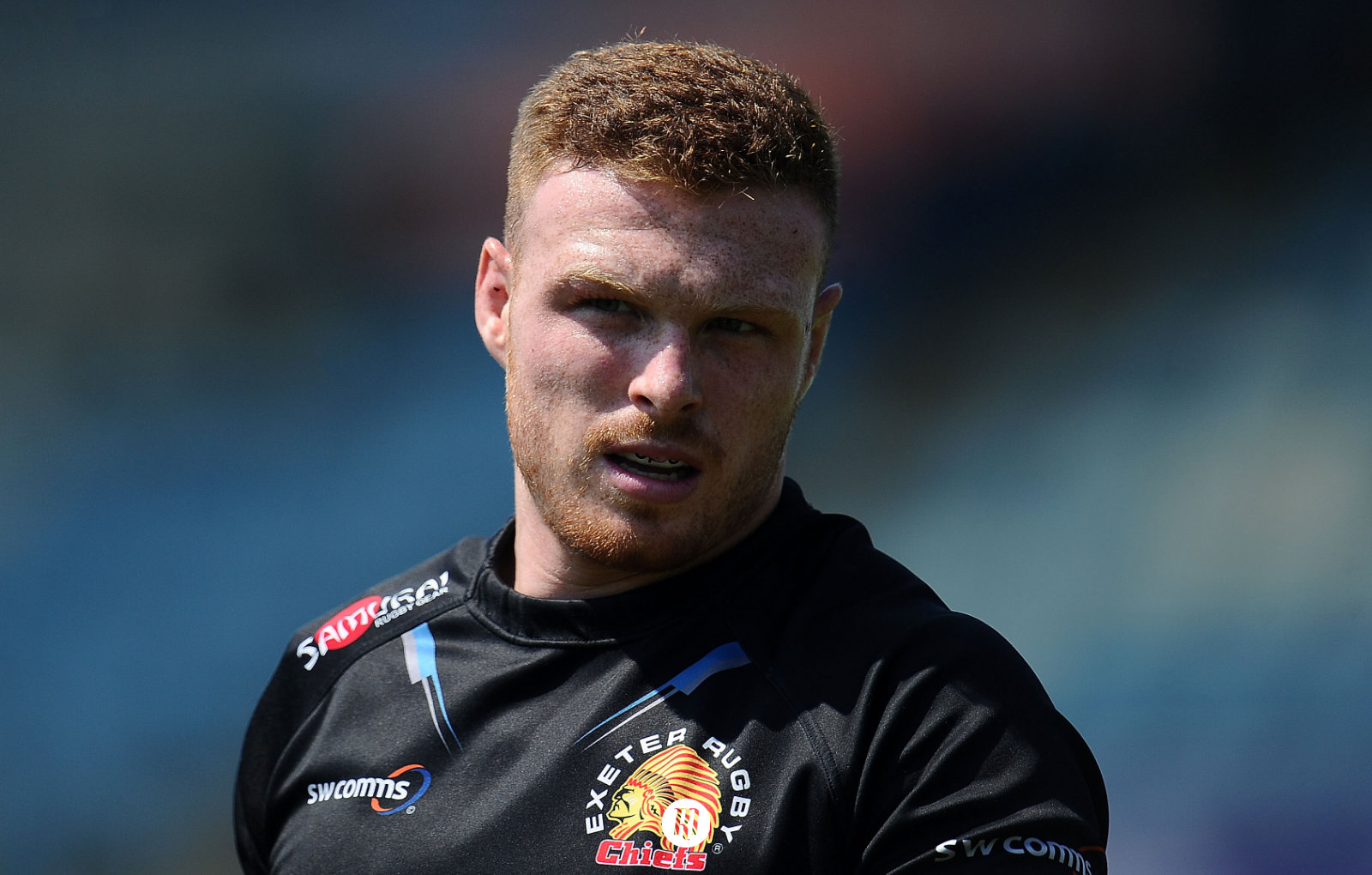Charting Northampton's rise from the ashes
It all ended with Alex Waller scoring under the posts with time gone; Northampton Saints were crowned the kings of England having defeated Saracens in the Final. The story’s beginnings however, are born from heartache and disappointment.
Northampton Saints was founded in 1880 as Northampton St. James by a local clergyman looking to promote order among the younger members of his parish. The team would swiftly rise to become one of the top sides in the country, with local farmer Harry Weston winning an England cap in the 1900s. The club went on to produce several England captains through the century; from Edgar Mobbs in 1909-10 (who would also go on to raise his own ‘sportsmans’ company; over 250 men in the First World War) to more recently Tom Wood and Dylan Hartley.
In the post war period and beyond, in spite of a number of players being considered the best in the English game, there was a divide between those in charge and the players, with a belief that the club was not keeping up with the modern game, and therefore not attracting the calibre of players required to maintain the levels of success many were accustomed to.
A year after the introduction of the English league system, the players decided they had had enough of those that were running the club and the ‘Saints Revolution’ was born. Several former players formed a taskforce to take the club back to the top of the game and ushered in a changing of the guard who would propel the club in the right direction. The club restructured and brought in players such as All Blacks legend Wayne Shelford, in order to re-establish the club among the English elite.
In 1990 the club gained promotion to the First Division and then progressed to the Pilkington Cup Final a year later. A number of new and future England and Lions players were now being produced on a conveyor belt of young talent rising through the ranks – Tim Rodber, Matt Dawson and Paul Grayson to name a few.
In 1994, British & Irish Lions legend Sir Ian McGeechan would take over the head coaching role, although the club would be relegated at the end of the season. In many ways this was a sign of what the country should have expected of the second tier many years later; when the club went down its single season in the second tier was dubbed ‘The Demolition Tour of Division Two.’ They won every game and averaged 50 points per contest for the season.
Taking European Crowns
When professionalism hit the game in 1995, local businessman Keith Barwell took the reins and the club maintained its place at the top table, coming second in the league in 1999. With McGeechan moving on at the end of that season and with the club having solidified its foundations, former player John Steele as new head coach, took them to the Heineken Cup title in 2000 on the back of inspirational captain Pat Lam. They beat a tremendous Munster side 9-8 at Twickenham, where they had previously lost to Wasps in the Tetley’s Bitter Cup Final a few weeks before.
After a series of up and down seasons from there, the club only narrowly survived relegation in 2004-5; this was the year that saw five teams fighting to avoid the drop on the final day, and Northampton were lucky to survive with other results going their way.
Despite advancing to the semi-finals of the Heineken Cup against Biarritz the following season, disaster was to hit Franklin’s Gardens as they were relegated to National League One.
The Fall From Grace
Beating London Irish on the final day 27-22 would not be enough; no one celebrated this first league win since December. By defeating Saracens on the final day, Worcester Warriors had condemned Northampton to life in the second tier.
This makes it sound far more simplistic than it truly was. Northampton’s problems had materialised long before it came down to a final day gun-slinging shootout with the other relegation candidates Worcester Warriors. They had the same number of wins and draws as Worcester but lost out on losing bonus points, finishing bottom of the table.
Throughout the season Carlos Spencer had been accused of showboating – but many feel that contrary to this, it was an unfortunate by-product of having a player of such vision and guile reduced to making everything happen while those around him stood and watched with blank faces instead of running the lines he had been accustomed to in the shirts of the Auckland Blues and New Zealand.
Club captain Bruce Reihana pledged that the club would ‘bounce back’, and a restructuring behind the scenes and in playing style saw then England Saxons coach Jim Mallinder take over as head coach and Director of Rugby, with former players Dorian West and Paul Grayson filling the assistant coach roles. Till now, Northampton had been considered a smash and grab style team, not dissimilar to the South African approach – but even with the imaginative and mercurial Carlos Spencer pulling the strings at fly-half, they couldn’t shake the fact that they played a predominately power style that lacked the subtleties necessary to close out tight games.
Players such as World Cup winners Ben Cohen and Steve Thompson left the club with some choice words to say about how they believed things had gone over the course of the previous season, and how the club was being run behind the scenes.
After just a few games in charge, Jim Mallinder and Dorian West had altered the culture and brought a renewed optimism back to the Franklin’s Gardens faithful. The club would ensure promotion as early as March after victory against second placed Exeter Chiefs on the 22nd, and they kept their focus and resolve to ensure that they would remain unbeaten for the season, much as they had in their previous ‘demolition tour’ of the second tier. This also meant they would return to the Premiership at the first time of asking, pulling off a better season than previously relegated Harlequins. To further boost the club’s spirits, they also beat Exeter 24-13 in the EDF Energy Trophy at Twickenham – icing an already sweet cake!
Chris Ashton set a then English League record of 39 tries in a season (although this is now held by Phil Chesters with 70 in National League Two South in 2010-11, but that’s a story for another day!).
Exeter Chiefs, perennial bridesmaids at this point, would finish second, 26 points behind the Saints.
Forced to travel the length and breadth of the country the squad and fans would rediscover what makes rugby the sport we all know and love. Many players spoke to the media throughout the season about the positives of long coach journeys, and a few beers on said journeys, that allowed the team to bond and realise what a privilege it truly is to play in the Premiership against the best the country has to offer.
The Return To Glory
Silverware swiftly followed Northampton’s return to the elite ranks – defeating Bourgoin 15-3 in the Challenge Cup Final was accompanied by solidification with an eighth place finish in their first season back in the league. The next season they would win the Anglo-Welsh cup 30-24 over Gloucester, before making the Premiership Playoffs in 2009-10, 2010-11, 2011-12 (along with yet another Anglo-Welsh cup that season) and 2012-13.
The elusive title was still out of reach however.
Northampton had come close to reaching the Promised Land – they lost the 2012-13 Final 37-17 to Leicester Tigers, although it is a Final that will live in infamy, with Dylan Hartley being the first player to be red carded in a Premiership Final for allegedly calling Barnes a cheat. Hartley would go on to say that it was aimed at opposite number and skipper Tom Youngs, but ultimately this display would lose Hartley his place on the plane to Australia for the Lions tour later that year.
His sending off all but handed Leicester victory. The team would show their resilience and how far they had come by rallying in adversity, but it was to no avail, as the numerically superior Leicester Tigers side romped to victory in the closing stages of the match, when the work rate of 14 players took its toll.
In the 2013-14 season the club would win another Challenge Cup against Bath 30-16, and finished second in the league, before making it to their second consecutive final. It was a tense and suffocating affair, with both Northampton and Saracens putting in superb performances in the early evening sunshine in Twickenham Stadium.
With the game at 14-14 after 80 minutes, the Final would go to extra time; a first in the competition.
Needing only a drop goal or penalty to overturn a 20-17 defecit, Northampton threw everything they had at the Saracens line. Alex Waller’s try with the final act of the game, and after a long and intensive TMO adjudication, would seal it for the Saints at 24-20. It was a cruel blow for Saracens, but saw redemption for Northampton after the turmoil of their relegation eight seasons before.
Conclusion
Although they were certainly not the first big name team to face relegation in the professional era, Northampton’s achievement was made all the more impressive by the way that they would not only regain promotion, but go from success to success after returning to the top table of Northern Hemisphere rugby.
The club re-established themselves, winning European and Domestic silverware over the course of the eight years between their demise and return, and with their win in 2014, now also have a Premiership title to their name.

Filed under:
Gallagher Premiership
Written by: Michael Kerr
Follow: @michaelj_kerr · @therugbymag
